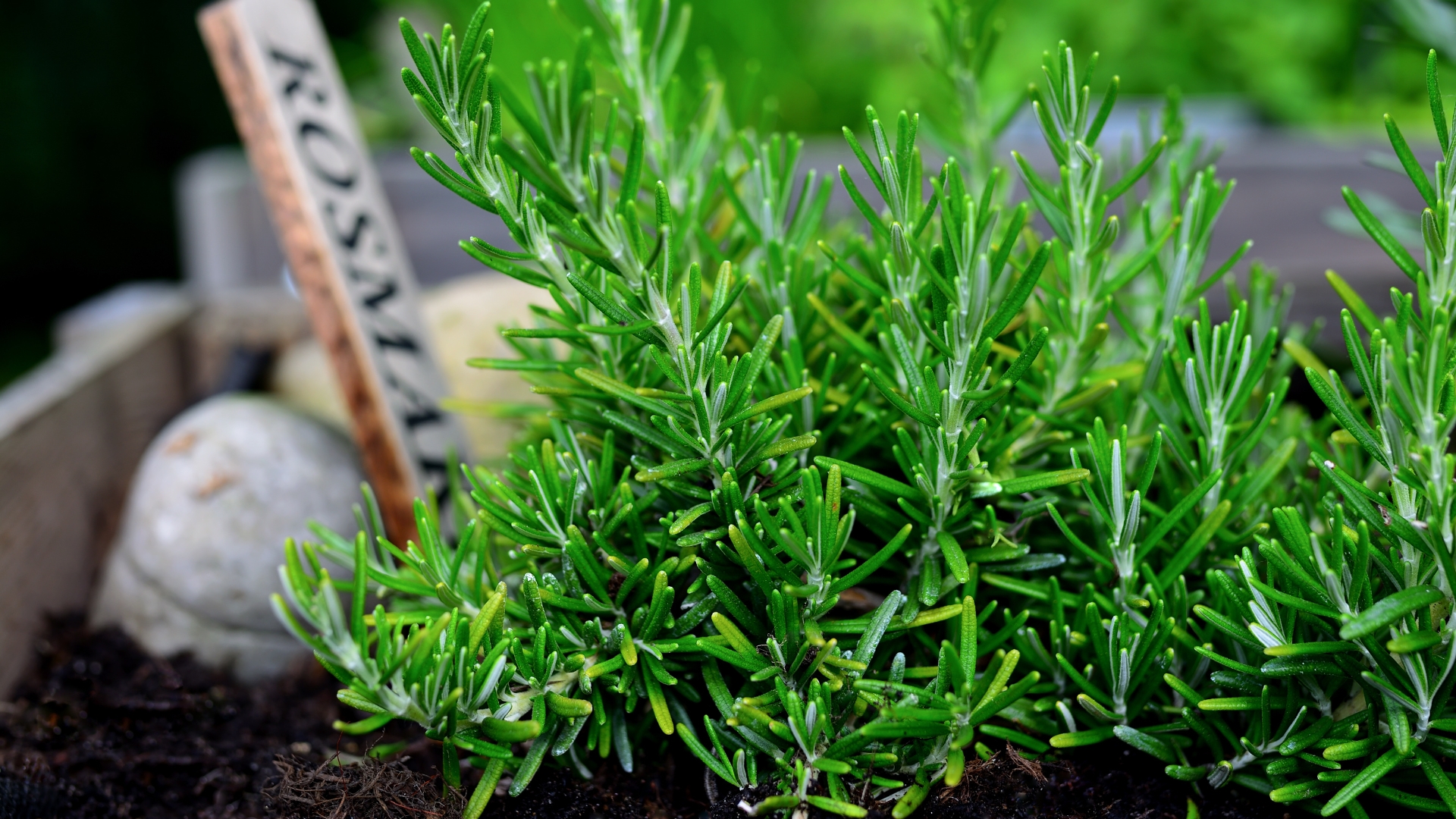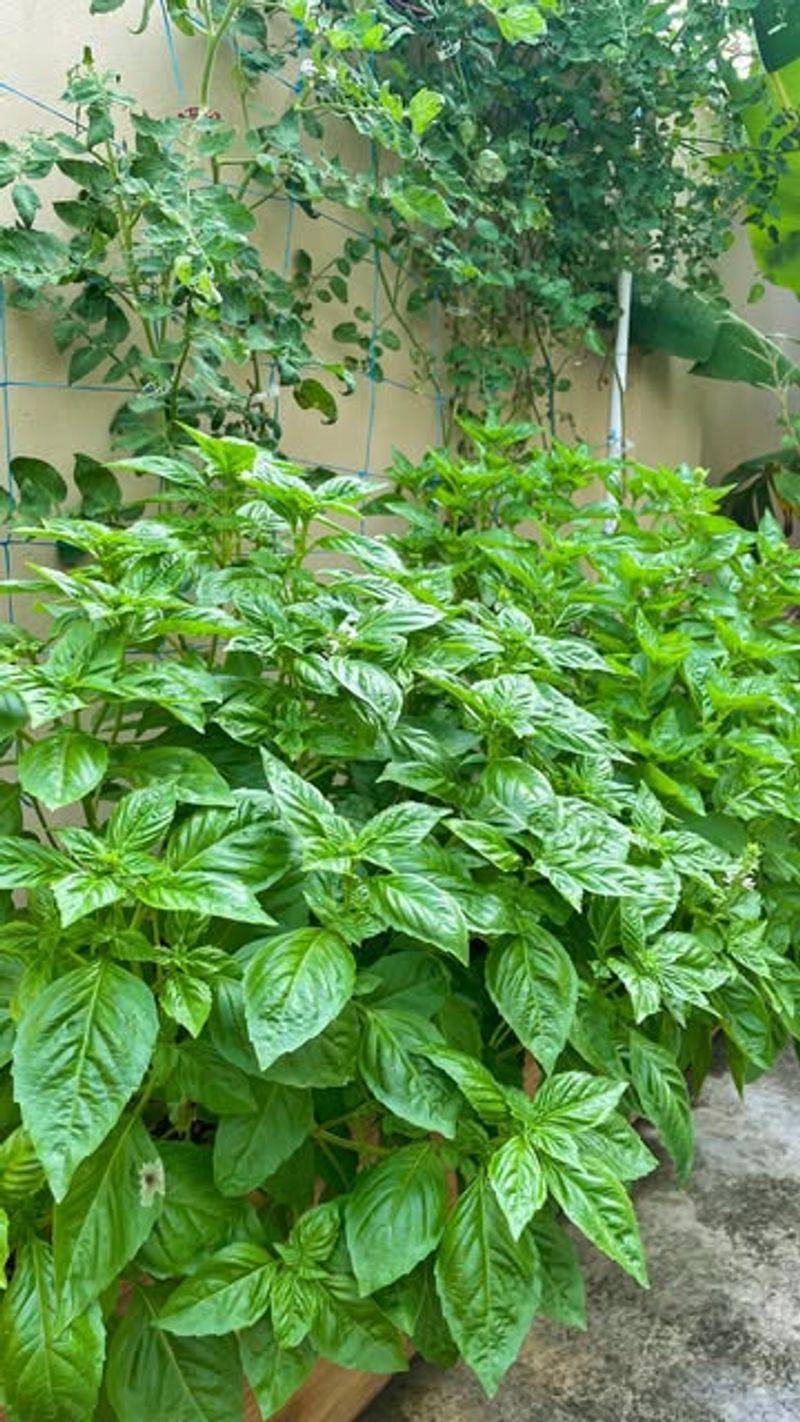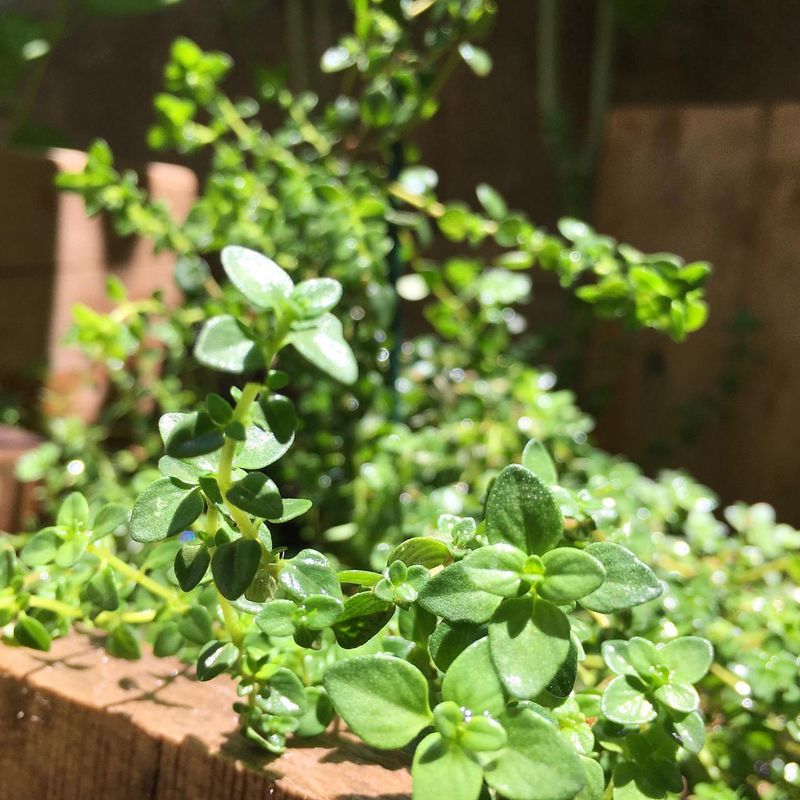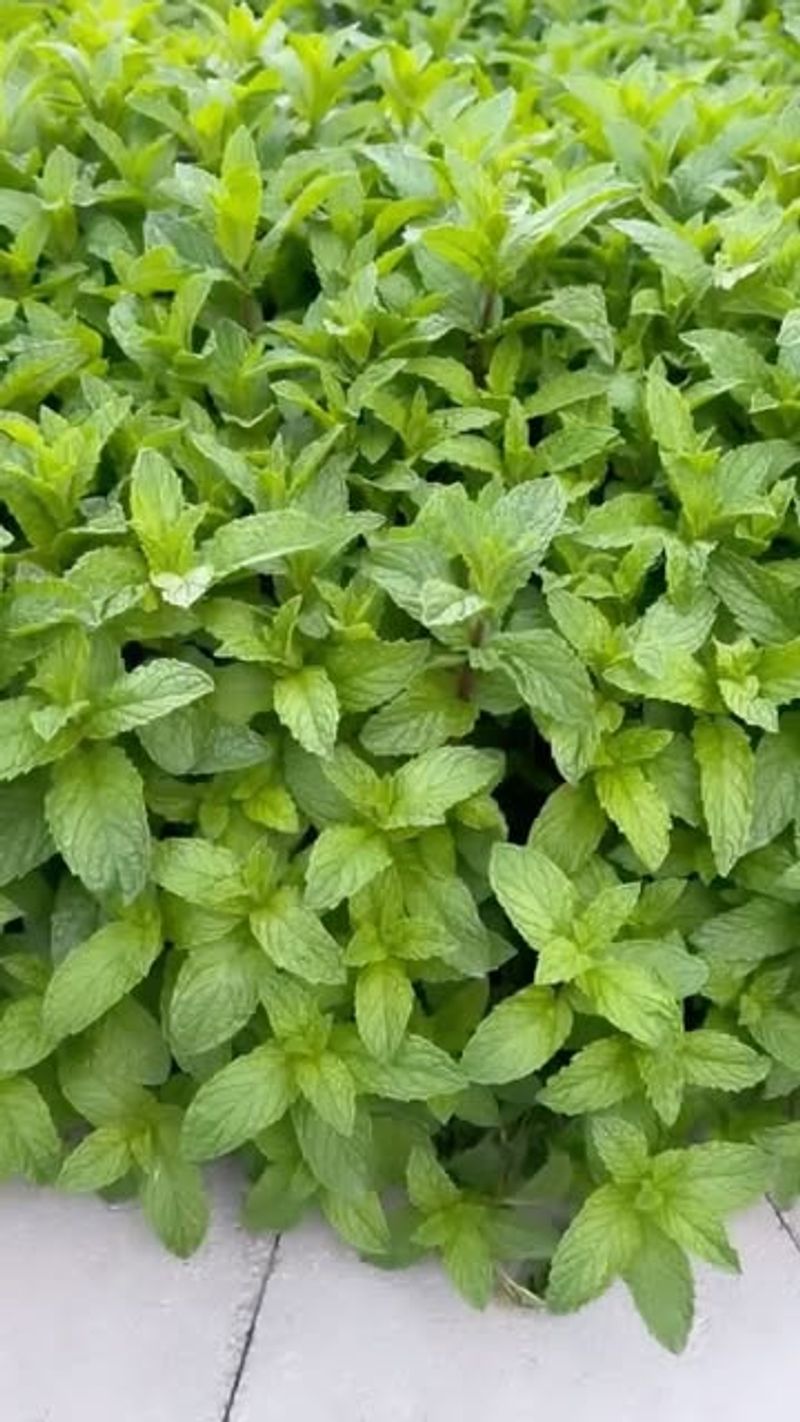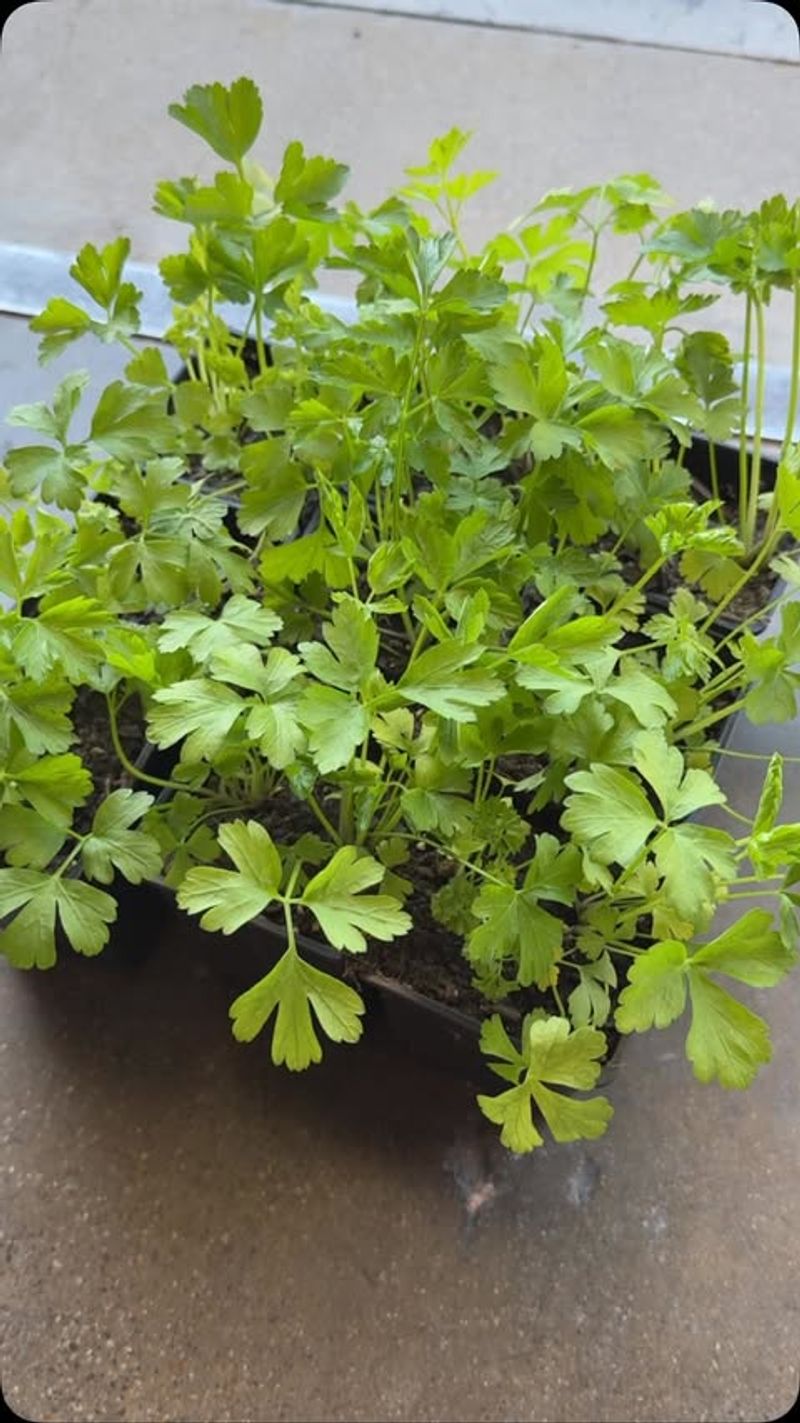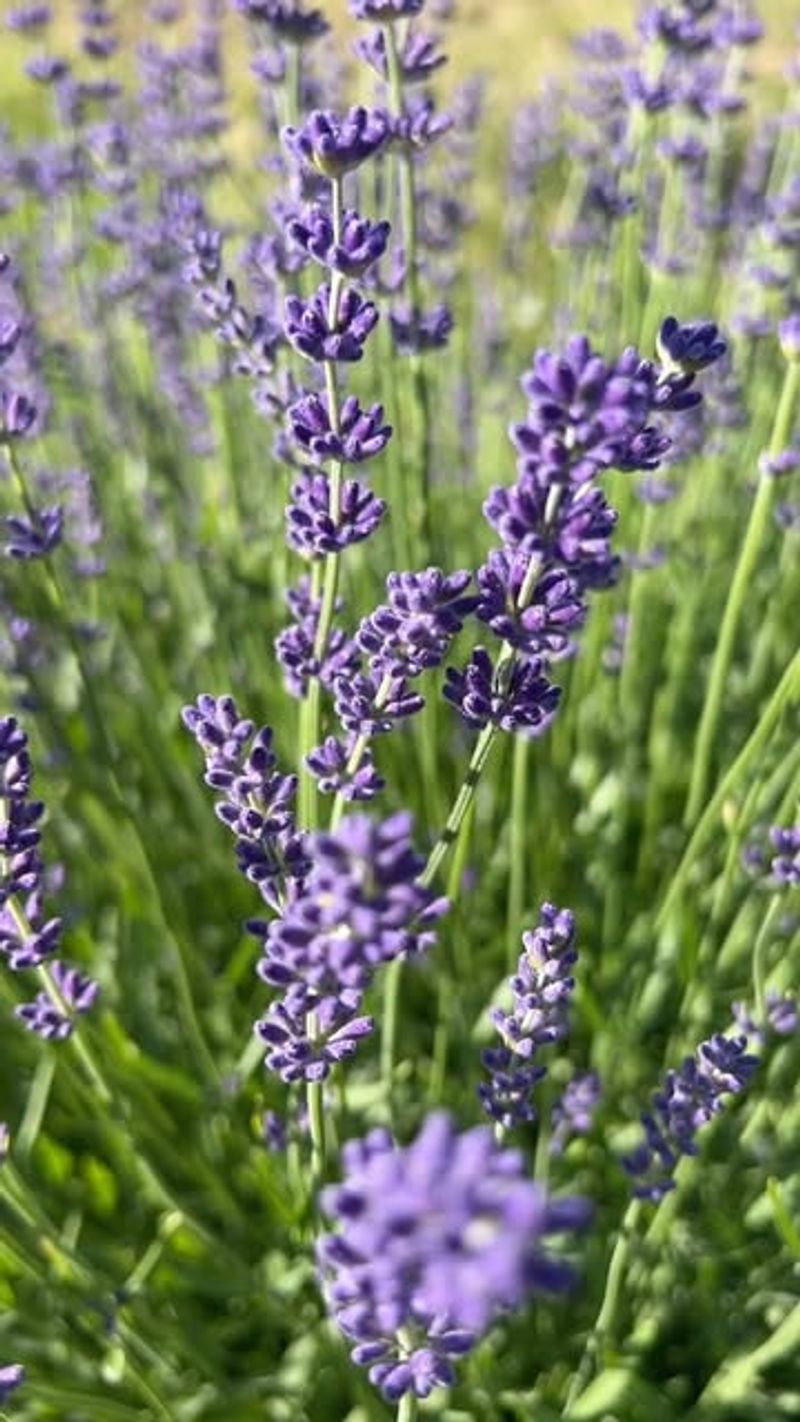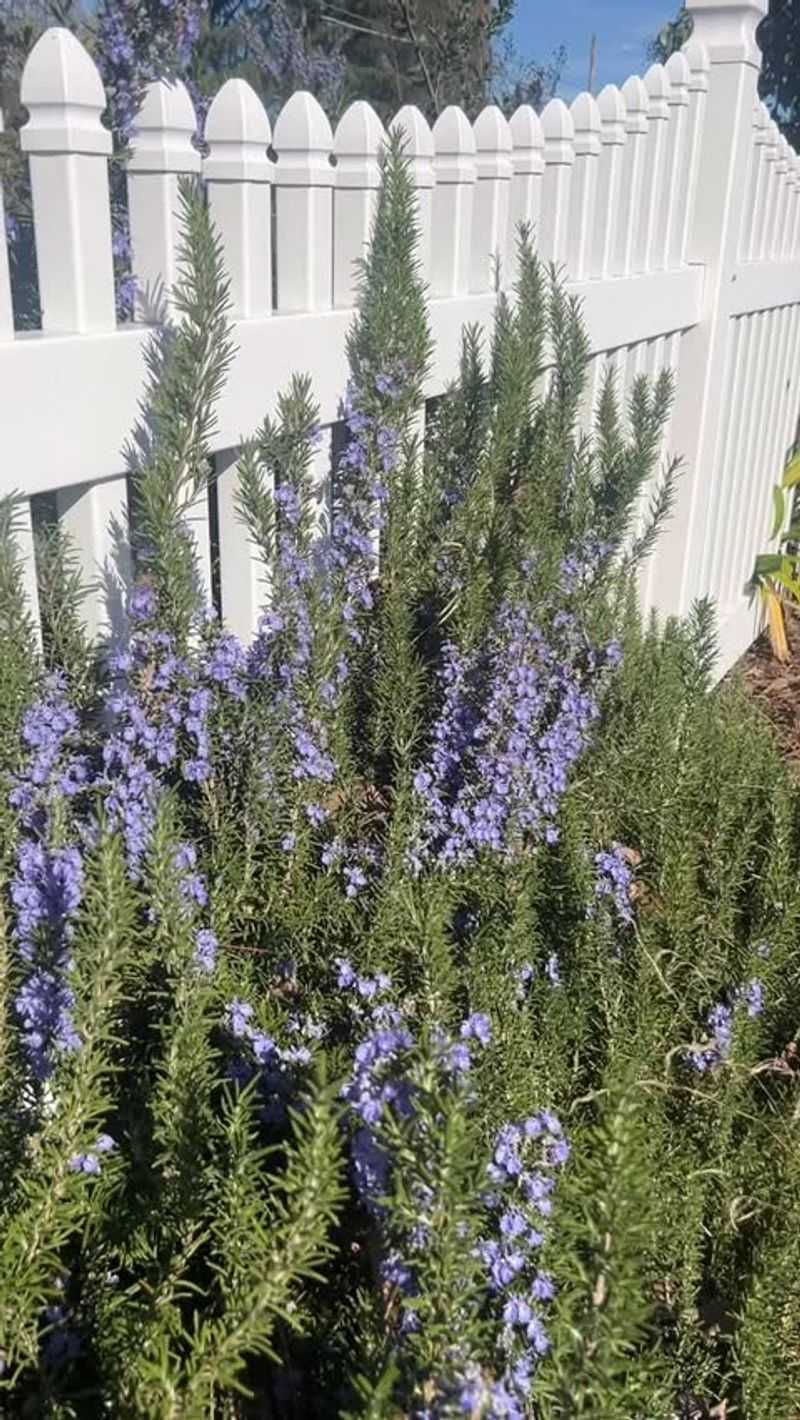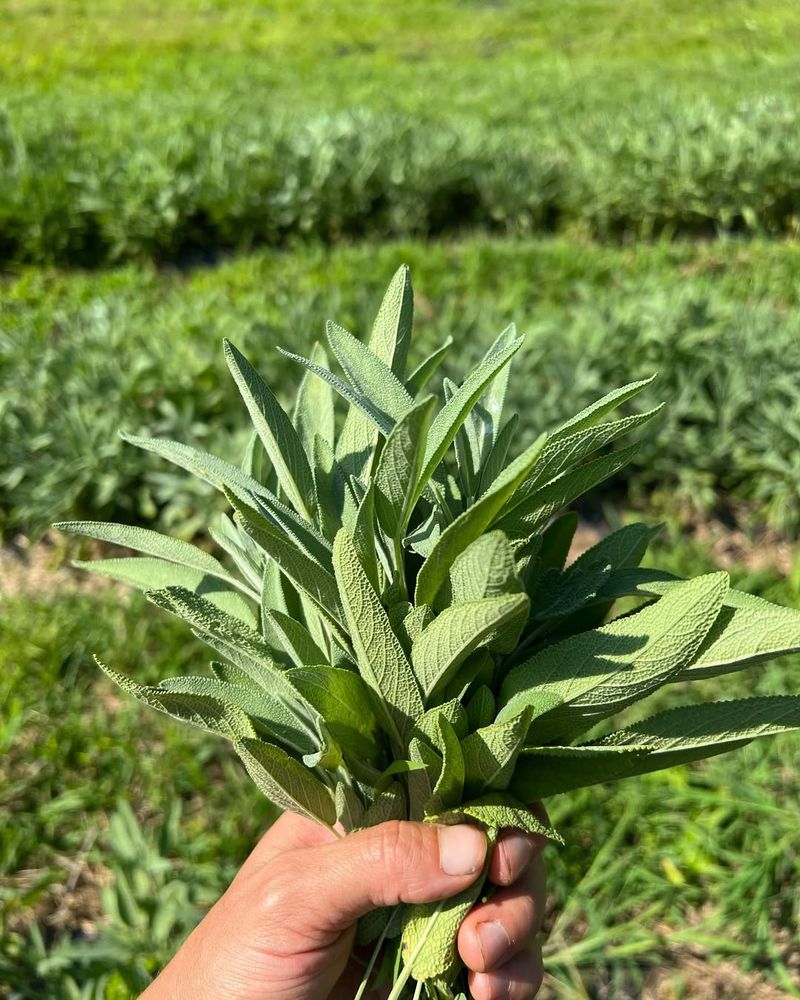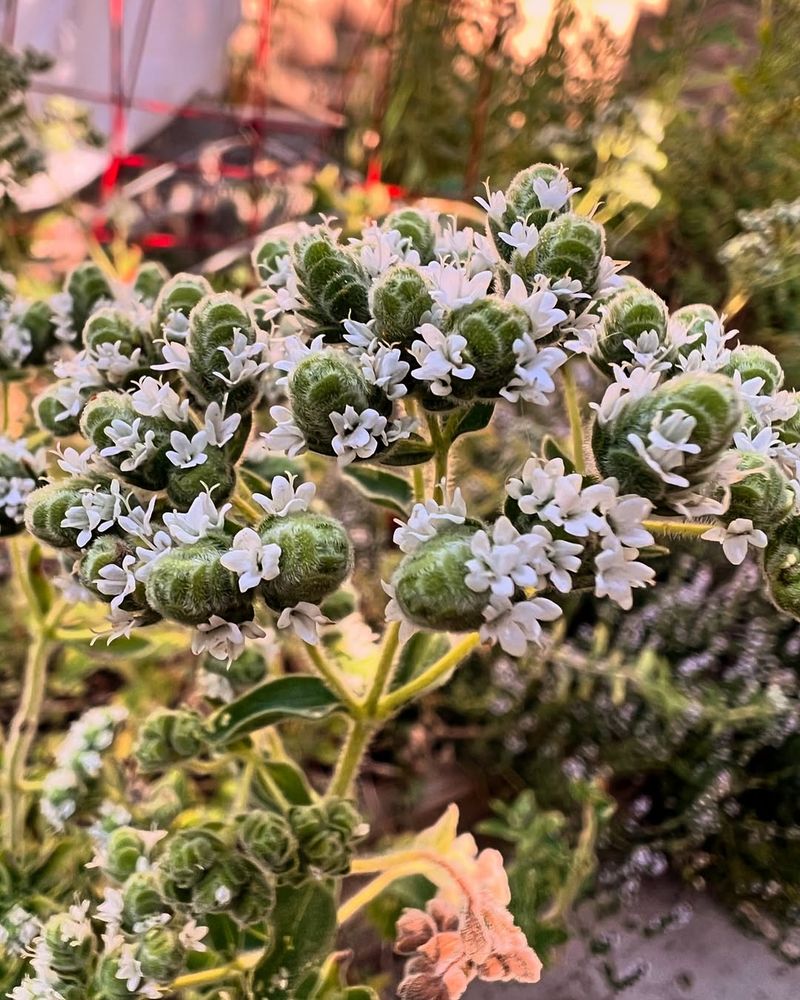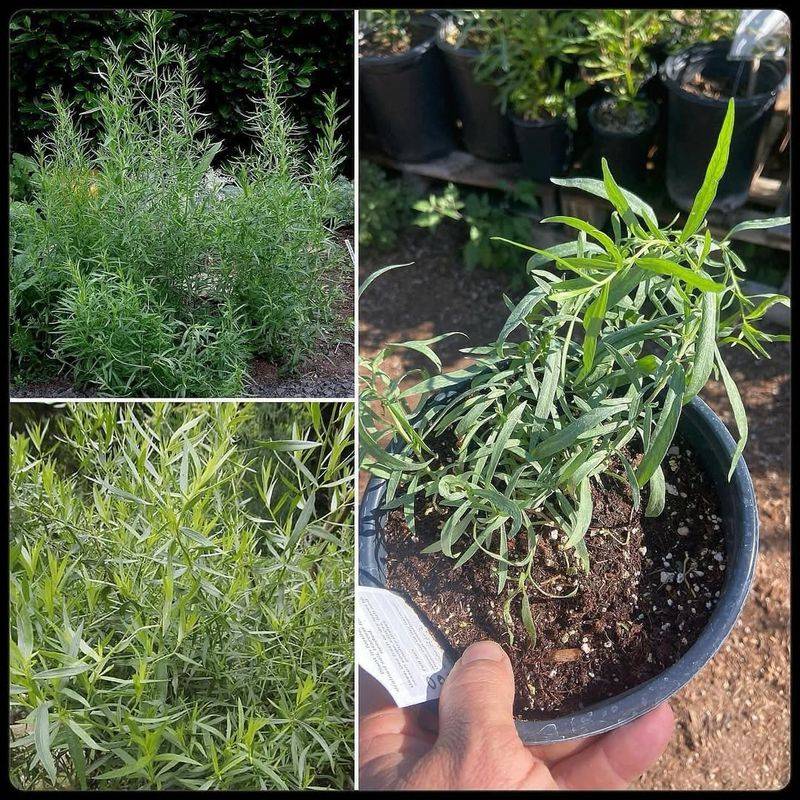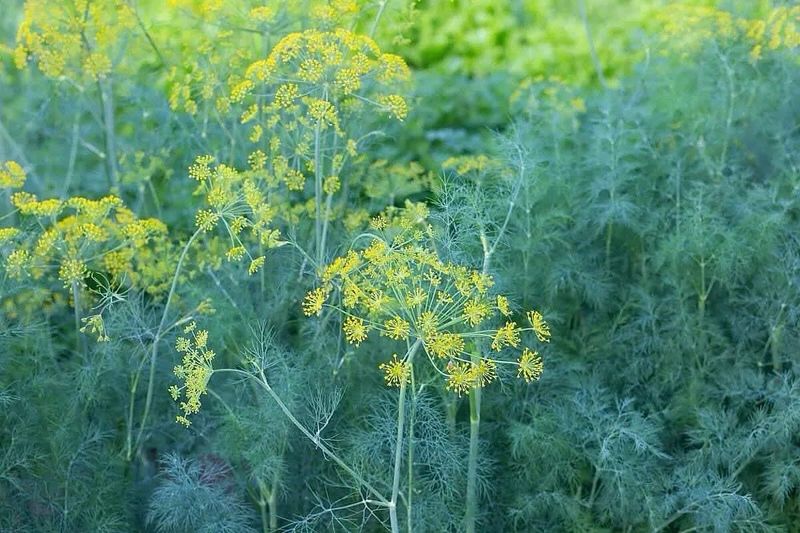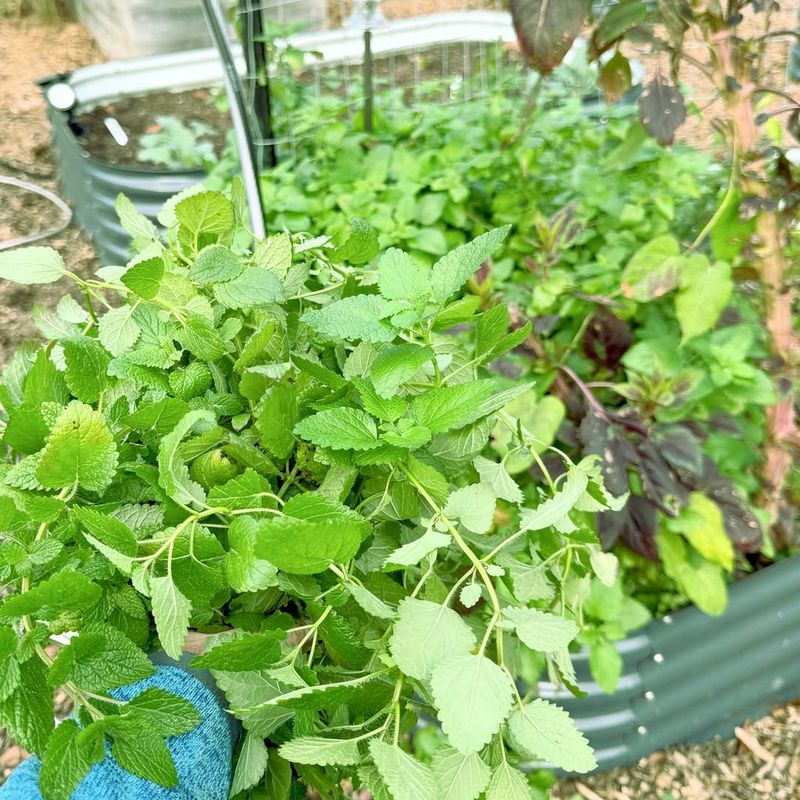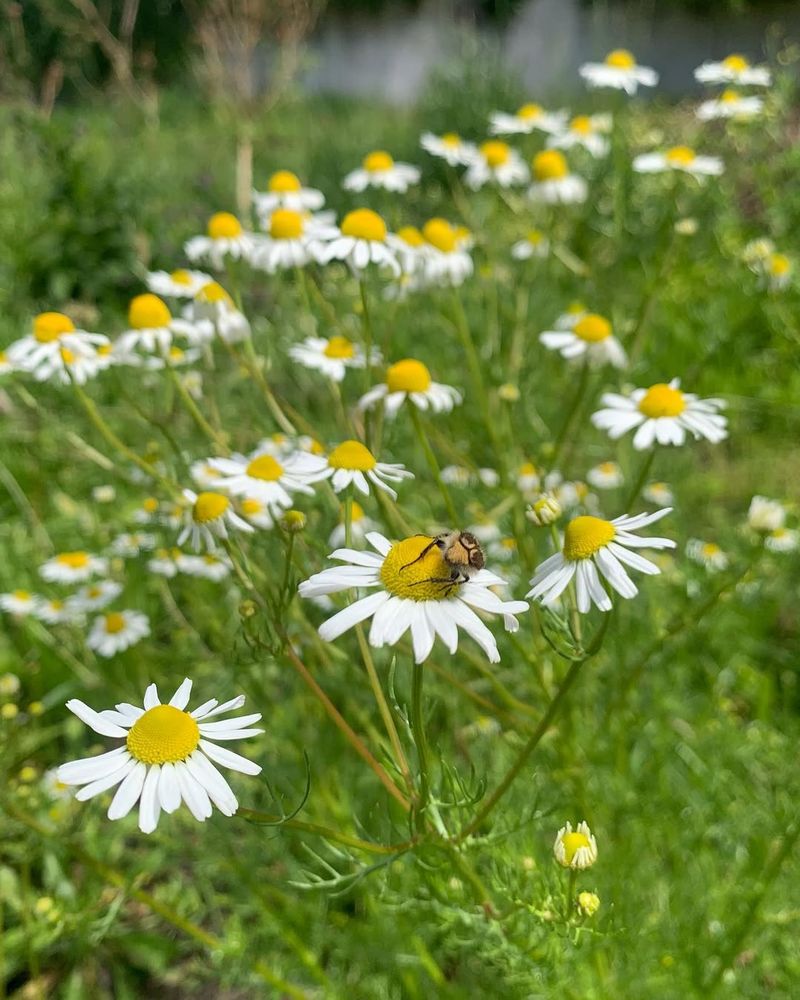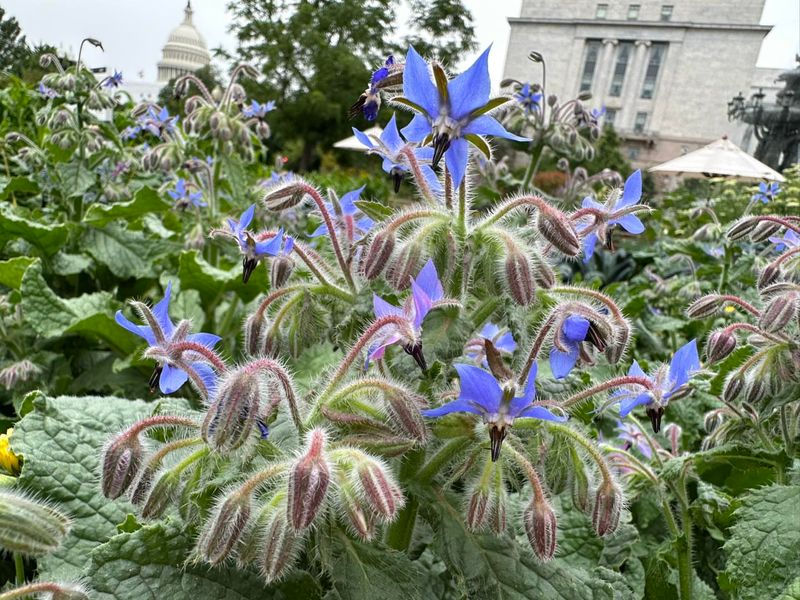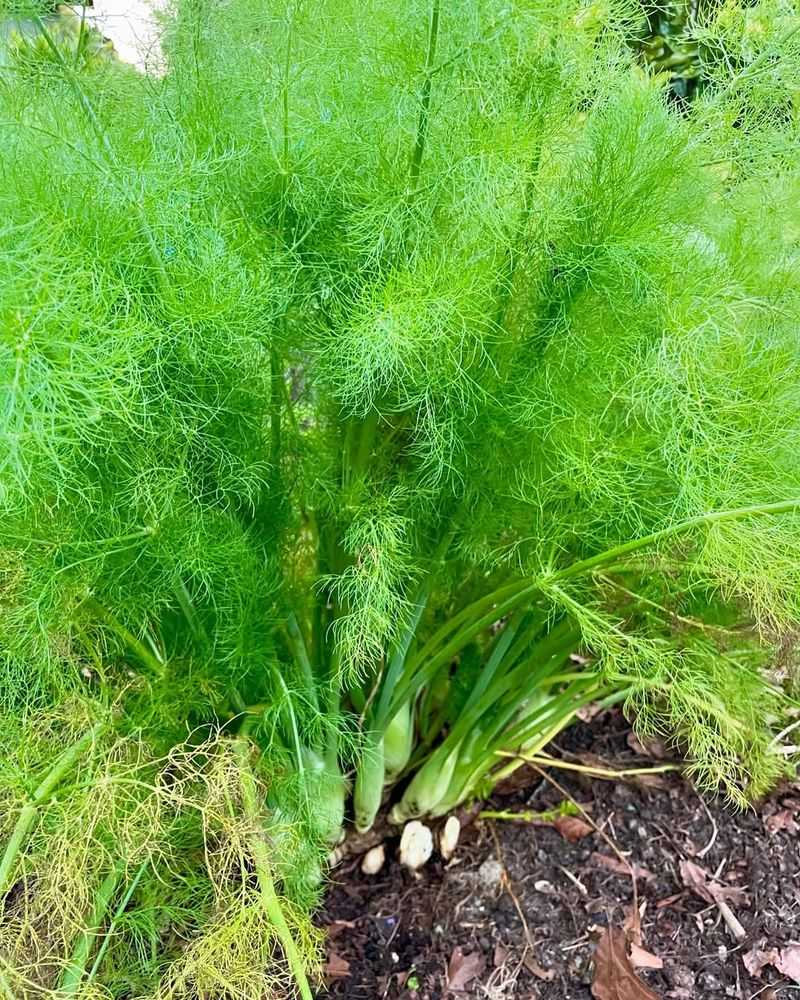Imagine your garden filled with the delightful scents and vibrant colors of herbs. Herbs not only add beauty but also offer practical benefits for both your garden and kitchen. Perfect as filler plants, they improve soil health and attract pollinators. Let’s explore 16 amazing herbs that can transform your outdoor space.
1. Basil
Basil’s aromatic leaves are a favorite among gardeners. Known for its sweet, clove-like aroma, it pairs beautifully with tomatoes. Its bright green foliage creates a vibrant contrast in any garden bed.
Plant basil near your vegetable patch to repel pests and attract beneficial insects like bees. Basil grows quickly, making it an excellent choice for filling empty spots.
It loves sunny locations and can thrive in pots or directly in the soil. Harvest leaves regularly to encourage more growth, and enjoy fresh basil in your salads, pastas, or homemade pesto.
2. Thyme
Tiny but mighty, thyme is a versatile herb with a strong, earthy flavor. Its small leaves and woody stems make it an attractive filler for borders and edges.
Thyme thrives in well-drained soil and full sun, making it perfect for rock gardens or between stepping stones. This herb’s resilience to drought is a bonus for busy gardeners. Scatter thyme throughout your garden to enjoy its delightful, herbal scent.
Use it fresh or dried in cooking to enhance the flavors of meats and vegetables. Its evergreen nature ensures your garden remains lively all year round.
3. Mint
Mint is a refreshing addition to any garden, known for its invigorating scent and rapid growth. Its bright green leaves spread quickly, filling spaces with ease.
Plant mint in containers to keep its roots in check, as it can become invasive. Enjoy the cooling effect it brings to teas, desserts, and salads. Mint prefers partial shade but can adapt to sunny spots. Its fragrant leaves attract pollinators, adding life to your garden.
Regular trimming helps maintain its compact shape, ensuring it remains a vibrant, green filler plant.
4. Parsley
This is a robust herb that enriches gardens with its lush, curly leaves. Parsley’s mild flavor complements a wide range of dishes, from soups to salads.
Parsley thrives in sunny or partially shaded areas and grows well in containers. As a biennial, it provides greenery for two years. Parsley attracts beneficial insects, supporting a healthy ecosystem. Regular harvesting promotes bushier growth, keeping your garden full and fresh.
Consider adding parsley to your garden for a pop of green and a boost to your culinary creations.
5. Cilantro
Cilantro, with its distinctive flavor, is a staple in many cuisines. Its feathery, green leaves make it an attractive filler in garden beds. Cilantro prefers cool weather and can bolt in the summer heat, so plant it in spring or fall.
Its fresh taste is perfect for salsa, curries, and salads. This herb attracts beneficial insects, improving garden biodiversity. Allow some plants to flower and set seeds for coriander spice.
Regular harvesting encourages new growth, keeping cilantro lush and productive. Add cilantro to your garden for a flavorful and visually appealing addition.
6. Lavender
With aromatic purple blooms and silvery foliage, lavender casts a calming spell. This herb thrives in sunny, well-drained spots, adding elegance and fragrance to any garden.
Lavender’s soothing scent is known to calm the senses, making it a favorite for aromatherapy. It attracts pollinators like bees and butterflies, enhancing garden vitality. Use lavender in sachets, soaps, or teas for its calming properties.
Regular pruning helps maintain its shape and encourages more blooms. Plant lavender as a border or in masses for a striking visual impact. Its beauty and aroma make it a garden treasure.
7. Rosemary
Rosemary, with its needle-like leaves and woody stems, adds structure and fragrance to gardens. It thrives in sunny, well-drained areas and can be shaped into hedges or topiaries.
Rosemary’s intense aroma is perfect for culinary use, enhancing meats and roasted vegetables. This hardy herb attracts bees, supporting pollination. Its evergreen nature means your garden remains lively year-round.
Prune rosemary regularly to promote bushier growth and prevent it from becoming woody. Whether in a pot or as part of a garden bed, rosemary is a timeless filler plant.
8. Sage
Earthy, elegant, and endlessly useful—sage brings texture and aroma to any garden bed. It flourishes in well-drained, sunny spots and withstands drought, making it low-maintenance.
Sage’s bold flavor enhances poultry, stuffing, and sauces. Its leaves are also used in teas for their medicinal properties. Plant sage alongside rosemary and thyme for a classic herb trio. Sage attracts pollinators, contributing to garden health.
Regular harvesting keeps it compact and encourages fresh growth. Its distinctive foliage and robust nature make sage a valuable addition to any herb garden.
9. Oregano
Oregano, famous for its role in Italian cuisine, offers small, dark green leaves with a robust flavor. This hardy herb thrives in full sun and well-drained soil, making it ideal for garden borders or rock gardens.
Oregano’s pungent scent repels pests, while its flowers attract pollinators. Use fresh or dried in pasta sauces, pizza, and salads. Oregano is low-maintenance and drought-tolerant, perfect for busy gardeners.
Trim regularly to prevent it from becoming leggy and to encourage new growth. Incorporate oregano into your garden for flavor and functionality.
10. Chives
Delicate purple flowers and graceful green blades make chives a garden favorite. Their mild onion flavor enhances salads, soups, and omelets.
Chives thrive in both sunny and partially shaded areas, growing well in pots or directly in the ground. They attract pollinators, boosting garden health. Regular trimming stimulates fresh growth and keeps chives looking tidy.
Allow some to flower for visual appeal or snip them back to encourage more leaves. Easy to grow and maintain, chives are a delightful herb for culinary and ornamental purposes.
11. Tarragon
Tarragon’s narrow, green leaves and anise-like flavor make it a unique garden herb. It thrives in sunny, well-drained locations and can be grown in pots or garden beds.
Tarragon’s leaves add depth to sauces, dressings, and chicken dishes. This perennial herb is low-maintenance, requiring minimal watering once established. It attracts beneficial insects, supporting garden biodiversity.
Regular pruning encourages bushier growth and prevents it from becoming leggy. Add tarragon to your herb collection for a distinctive flavor and a touch of greenery in your garden.
12. Dill
Combining graceful greenery with bold taste, dill earns its place in any herb bed. Ideal for salads, pickles, and sauces, dill thrives in sunny spots with well-drained soil.
This annual herb grows quickly, filling spaces with its airy foliage. Dill attracts beneficial insects, enhancing garden health. Allow some plants to flower and set seeds for self-sowing.
Continuous harvesting prolongs its productive life, keeping your garden lush and fragrant. Whether you’re flavoring dishes or attracting pollinators, dill is a versatile choice for herb gardens.
13. Lemon Balm
Lemon balm, known for its citrusy scent, is a versatile herb that brightens gardens. Its large, bright green leaves create a lush, fragrant patch.
Lemon balm thrives in sunny to partially shaded areas and adapts well to various soil types. Use its aromatic leaves in teas, desserts, or as a fresh garnish. Lemon balm attracts bees and butterflies, supporting pollination.
Pruning keeps it neat and encourages new growth, preventing it from becoming leggy. Add lemon balm to your garden for a fresh, zesty aroma and vibrant greenery.
14. Chamomile
With dainty white blooms and a gentle aroma, chamomile brings peace to any garden patch. Known for its relaxing properties, chamomile thrives in sunny, well-drained areas.
It’s used in teas and skincare for its gentle benefits. Chamomile attracts beneficial insects, enhancing garden biodiversity.
Allow some flowers to mature and self-seed for future growth. Regularly harvest the flowers to promote continued blooming. Whether for its calming tea or as a pretty filler, chamomile enriches any garden. Its soft, daisy-like blooms add a touch of tranquility to your outdoor space.
15. Borage
Borage, with its star-shaped blue flowers and lush green leaves, is a striking garden herb. Known for attracting pollinators, it boosts garden vitality.
Borage is edible, adding a cucumber-like flavor to salads and drinks. It thrives in sunny locations with well-drained soil. This annual herb self-seeds, providing continuous growth.
Borage’s flowers are not only pretty but also beneficial for bees and butterflies. Remove spent flowers to encourage more blooms. With its unique appearance and practical benefits, borage is a wonderful filler for any garden.
16. Fennel
Offering both structure and subtle spice, fennel is a garden herb that quietly stands out. It thrives in sunny spots with well-drained soil, adding height and texture to garden beds.
Fennel’s bulb, leaves, and seeds are all edible, enhancing dishes with a subtle licorice taste. This perennial herb attracts beneficial insects, promoting garden health. Regular trimming encourages fresh growth and prevents it from becoming too tall.
Fennel’s sculptural appearance and culinary versatility make it a fantastic filler plant. Add fennel to your garden for both beauty and flavor.

